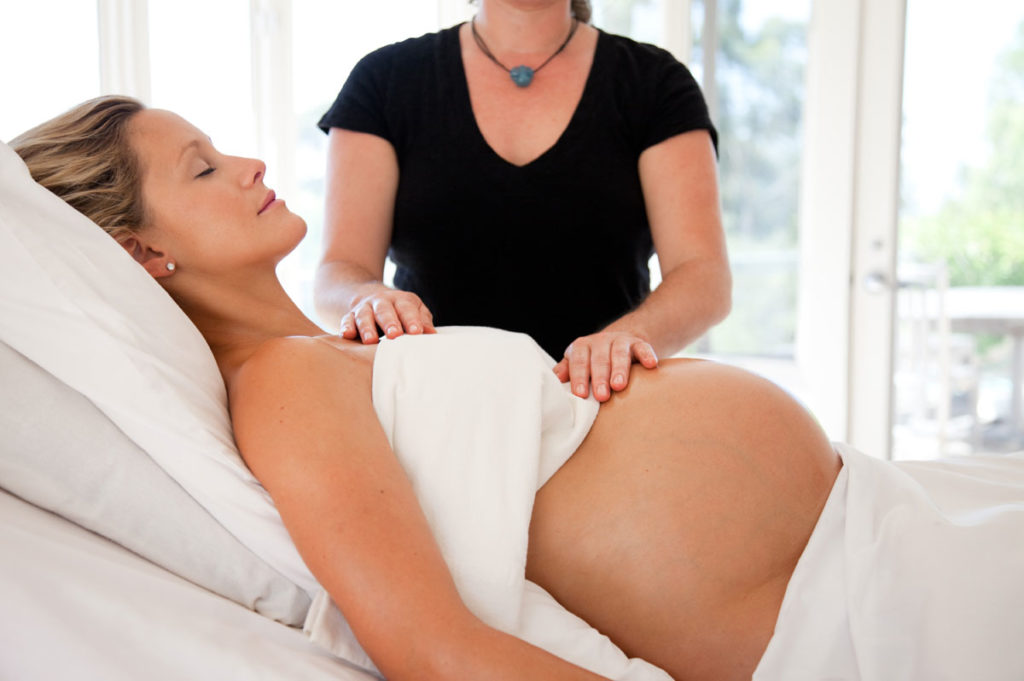Doulas & Midwives: The Scoop on This Trend
- Published: Thursday, June 1st 2017
- in Living Well

If you are planning to have a baby, you will be faced with choices that are much bigger than the color of the nursery–such as thinking honestly about your feelings when it comes to giving birth. Do you believe birthing could be potentially dangerous and it’s best to have a doctor available? Do you want to deliver in a “natural” (also known as drug-free) way but want extra support? Or are you in the middle and think childbirth is safe but want to have a doctor on hand…just in case?[1]
Many moms-to-be facing these decisions are choosing to have a doula or a midwife help with their delivery but everyone have different needs and it is most important to select the option that is best for you.
Doula or midwife: is there a difference?
Doulas and midwives are not medical doctors (ObGyns) but their roles in childbirth are very different. In a nutshell, midwives are licensed to deliver babies in hospitals, birthing centers or in homes, while a doula is similar to a coach and trained to provide physical, emotional and informational support before, during and shortly after childbirth.[2]
To make it a bit more complicated, in the U.S. there are two types of midwives. A certified nurse midwife (CNM) has a degree in nursing plus training to be a midwife; a certified professional midwife (CPM) has training in midwifery but does not have a degree in nursing. CNMs usually assist with deliveries in hospitals and work with a medical team, and CPMs typically manage births at home or in birthing centers.[3]
Because doulas are not delivering the baby, they are focused solely on the mom and can provide comfort techniques and emotional support to make the natural birth experience less painful and more positive.[4] Teaching (diet, exercise, health) is an important part of the services provided by doulas and midwives– and both try to avoid medical interventions unless it is necessary.
What’s fueling the trend?
Like many popular trends, there are a number of factors:
- In general, there is an increase in the use of natural and indigenous health and wellness modalities (think Ayurvedic medicine and acupuncture), and many women are looking to give birth in a more natural and authentic way.
- Many pregnant women are concerned about the increase in cesarean deliveries and want to be ready for a non-surgical delivery unless there is a medical emergency. (Between 2000 and 2010, C-sections increased 49.1 percent across the U.S.)
- More women want to be in a family-friendly setting designed to make birthing as comfortable as possible. Doulas in Los Angeles ranked the most “birth friendly” hospitals, based on a doula friendly staff, midwives on staff, birthing tubs, etc., and Cedars-Sinai Medical Center placed first (4.17/5).[5]
- And don’t forget the power of the media: The hit PBS series “Call the Midwife” has put a spotlight on nurse midwives, and Angelina Jolie and Kate Winslet are just a few of the stars who have been assisted by doulas.
Nurse-midwifery may not be the best option for some women who have high-risk medical conditions, and it is very important to tell your healthcare provider–whether she is a medical doctor or a midwife–your full medical history. And if your health changes during your pregnancy, listen to the experts and do what is best for your baby and you.
For more insights on a healthy pregnancy and what to expect after giving birth, read and “Pregnancy & Diet”
[1] ChoicesInChildbirth.org, “NYC Guide to a Healthy Birth,” 2012/2013
[2] TheBump.com, “ The Difference Between A Midwife and Doula” and Dona.org, “What is a Doula?
[3] Oprah.com, “Learn Your Alternative Birth Options,”
[4] TheBump.com, “What’s a Doula?”
[5] BestDoula.com
“Five Ways to Cope with Postpartum Depression”



